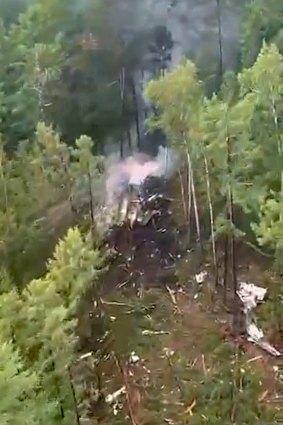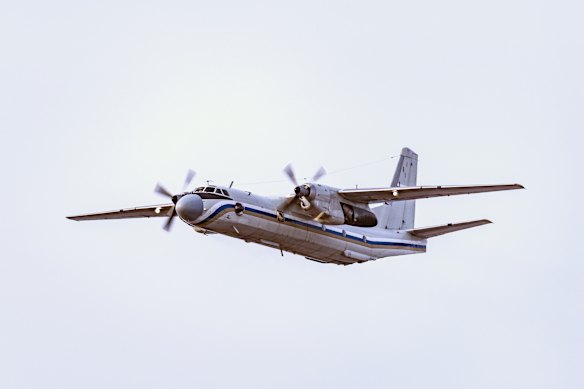Nearly 50 people feared dead in Russian plane crash
Moscow: An Antonov An-24 passenger plane carrying about 50 people crashed in Russia’s far east on Thursday and initial information suggested that everyone on board was killed, Russian emergency services officials said.
The burning fuselage of the plane, which was from the Soviet era and was nearly 50 years old, was spotted on the ground by a helicopter and rescue crews were rushing to the scene.
Unverified video, shot from a helicopter and posted on social media, appeared to show that the plane had come down in a densely forested area.

Unverified video shared on Telegram showed what appeared to be the crash site.Credit: Telegram/RIA Novosti
The plane, whose tail number showed it was built in 1976, was operated by a Siberia-based airline called Angara.
It was en route from the city of Blagoveshchensk to Tynda and dropped off radar screens while approaching Tynda, a remote town in the Amur region bordering China. The transport prosecutor’s office in the Far East said in an online statement that the plane had attempted a second approach while trying to land when contact with it was lost.
There were 43 passengers, including five children, and six crew members on board, according to preliminary data, Vasily Orlov, the regional governor said.
The emergencies ministry put the number of people on board somewhat lower, at about 40.
Debris from the plane was found on a hill around 15 kilometres from Tynda, the Interfax news agency quoted emergency service officials as saying.
“During the search operation, a Mi-8 helicopter belonging to Rossaviatsiya discovered the fuselage of the aircraft, which was on fire,” Yuliya Petina, an emergency services official, wrote on Telegram.
“Rescuers continue to make their way to the scene of the accident”.
Authorities announced an investigation into the crash.

An Antonov An-24 similar to the one involved in the crash. Credit: Getty Images/iStockphoto
Reuters, AP
Get a note directly from our foreign correspondents on what’s making headlines around the world. Sign up for our weekly What in the World newsletter.